Unemployment plunges to pre-Covid level of 5.1 per cent
Unemployment has unexpectedly sunk to pre-pandemic levels after the number of employed Australians surged by 115,000.
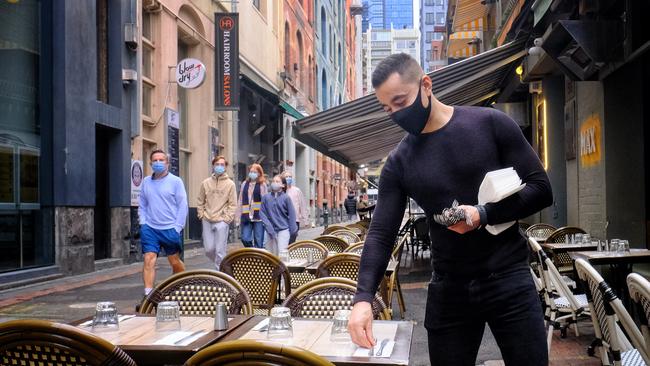
Unemployment plunged to pre-Covid levels of 5.1 per cent in May in a blockbuster result driven by the largest monthly rise in full-time employment on record, as women’s participation in the workforce rose to its highest level in the nation’s history.
Private sector economists had predicted the jobless rate to stay steady at 5.5 per cent, but numbers from the Australian Bureau of Statistics revealed a labour market recovery that continued to surpass even the most optimistic forecasts.
Employment has now lifted by more than 987,000 since the depths of the recession, which saw the jobless rate surge to 7.4 per cent in June-July last year. The May result is the best since the 5.1 per cent recorded in February last year before the impacts of Covid-19 hit the economy.
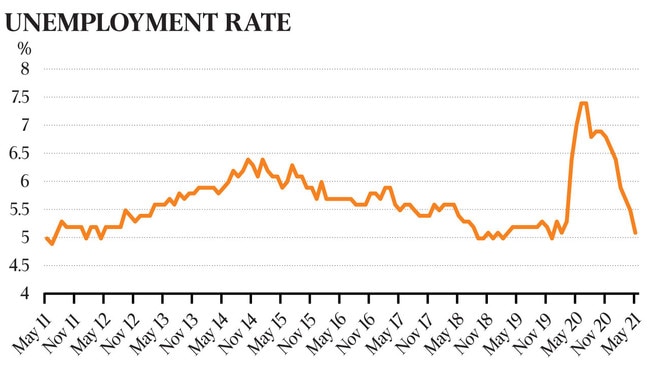
Seasonally adjusted ABS data showed full-time employment increased by 97,500 – the largest increase in the history of the data – while part-time employment lifted by 17,700. This compared with the consensus forecast among bank economists ahead of the release that an additional 30,000 jobs would be created.
The participation rate in May also increased by 0.3 percentage points to 66.2 per cent, around a record high, further underlining the strength of the latest labour force survey, conducted before Melbourne’s fourth lockdown.
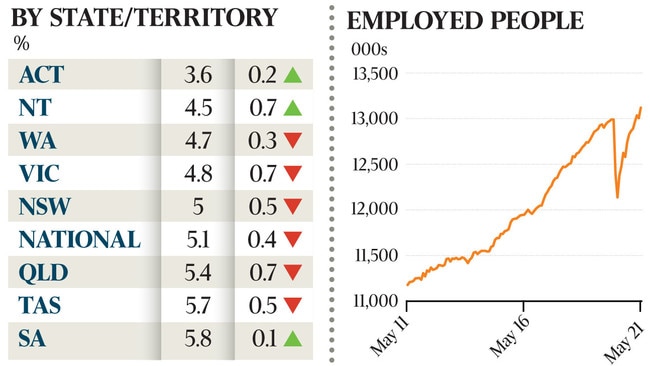
The number of employed women increased by 69,000 in May, and the number of men by 46,000. There were 1.6 per cent more females employed than at the start of the pandemic, and 0.5 per cent more males.
ABS head of labour force statistics Bjorn Jarvis said “a higher percentage of women were in paid work than ever before” at 58.8 per cent – 0.7 percentage points higher than at the start of the health crisis.
Unemployment is now running six months ahead of Reserve Bank estimates that it would end the year at 5 per cent, and 18 months ahead of budget forecasts published mere weeks ago. The number of employed Australians surged by 115,000 – more than triple the expected figure.
The underemployment rate, which measures those with jobs but who would like to work more, fell from 7.8 to 7.4 per cent – its lowest level since 2014, indicating a dwindling pool of “spare” labour as the post-pandemic recovery continued to pick up steam.
Youth unemployment ticked up to 10.7 per cent, but remained around its lowest since the start of 2009.
With the federal government and central bank committed to pushing unemployment below 5 per cent, Josh Frydenberg urged firms to continue hiring amid record levels of job vacancies.
“My message to business is very clear: employ Australians, employ the workers today that you need,” the Treasurer said.
“Be confident about your future; invest, grow, hire, innovate.”
But Innes Willox, chief executive of national employer association the Ai Group, warned businesses were “increasingly reporting extreme difficulties in filling vacant positions”, and that “without doubt, a large part of the issue is our closed borders”.

Mr Willox called on the government to adopt a more flexible approach to allowing foreign workers in to ease labour shortages. “The current international border setting is virtually ‘no one in and no one out’. This needs to give way to a more sensible position and a much more ambitious border opening goal than the July 2022 target … critical skill shortages are only going to get worse the longer our border remains closed.”
Economists said the precipitous drop in the jobless rate made it more likely the RBA would lift rates before the flagged “2024 at the earliest”, with a rapidly tightening labour market raising the prospect of a stronger-than-anticipated pick-up in workers’ pay.
Treasury has estimated unemployment needs to fall to 4.5-5 per cent before wage pressures emerge, while the RBA has speculated full employment may be closer to 4 per cent.

RBA governor Philip Lowe said in a speech on Thursday a “mindset” of cost-cutting among businesses was undermining wages growth, despite evidence of labour shortages across a number of regions and industries, and record levels of jobs vacancies. Dr Lowe said firms were choosing to restrict their output rather than risk hiring new employees at higher wages.
BIS Oxford Economics senior economist Sean Langcake said the latest jobs numbers suggested “wage pressures are likely to emerge sooner than (the RBA) expect”, and monetary policymakers would need to “bring forward their plans for a rate hike into 2023”.
ANZ senior economist Catherine Birch said there was an increasing chance her bank’s forecast of two rate hikes in the second half of 2023 would be brought forward. “The shrinking pool of underemployed workers is likely to be an important catalyst for businesses to lift wages, as they have less ‘available’ labour to draw on quickly,” Ms Birch said.
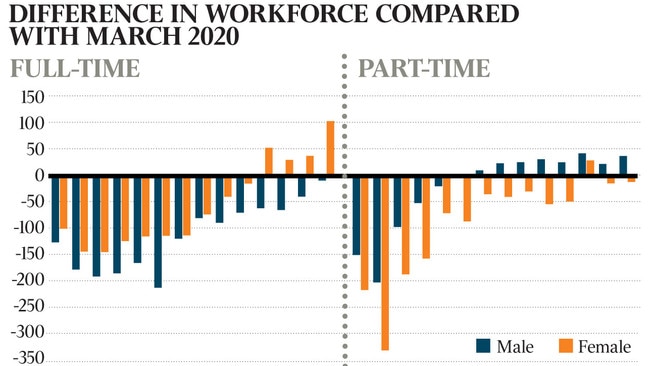
Underemployment had been “a much better predictor of wages growth” than the headline jobless rate in recent years, and was now at levels consistent with wages growth of 2.7 per cent, versus 1.5 per cent in the year to March
Mr Frydenberg said the labour force report was the latest evidence that the Australian economy was “roaring back – bigger, stronger, and leading the world”.
“There is a long way to go. What these numbers should do is give Australians confidence there is light at the end of the tunnel.”
On Wednesday night US Federal Reserve officials signalled they now expect to raise interest rates by late 2023.
CBA head of Australian economics Gareth Aird said in light of the recent shift in rhetoric by central banks in the US, Canada, New Zealand and England, “the RBA appears incredibly dovish, particularly given the relative strength of the Australian economy”.




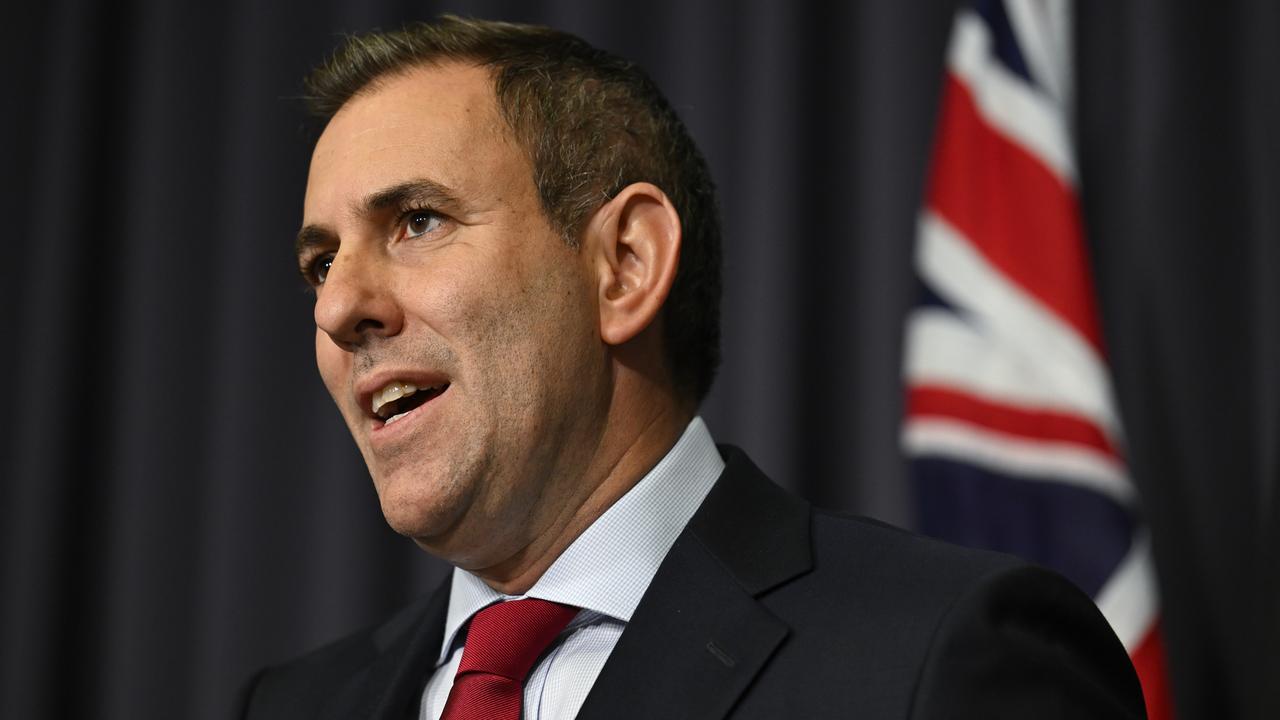
To join the conversation, please log in. Don't have an account? Register
Join the conversation, you are commenting as Logout